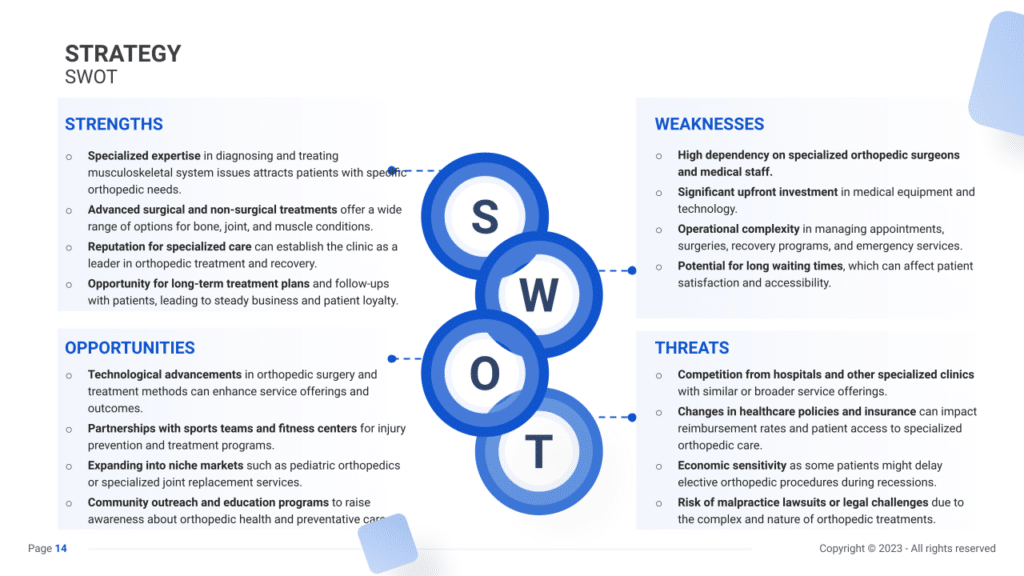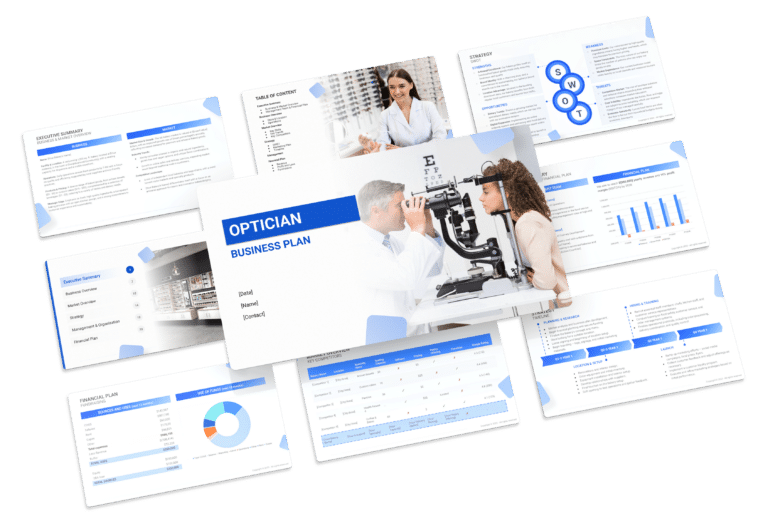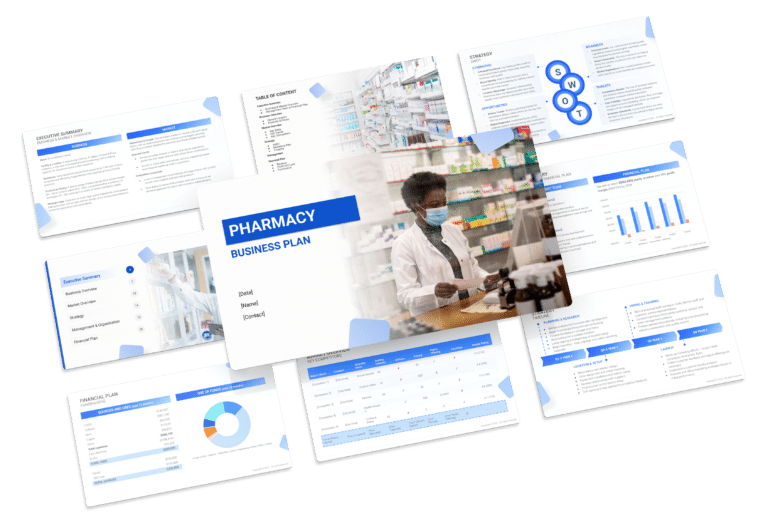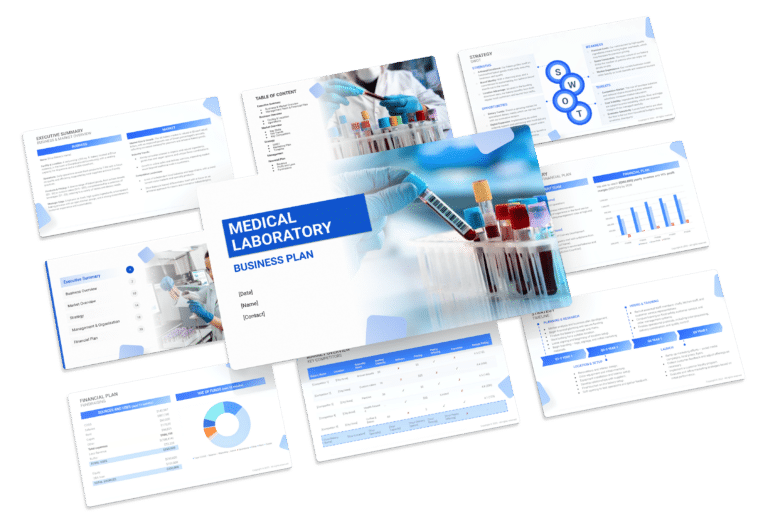How to Prepare a SWOT for an Orthopedic Clinic

Crucial for an orthopedic clinic’s business plan, a SWOT analysis (Strengths, Weaknesses, Opportunities, Threats) assesses internal and external factors. Clinic-controlled strengths and weaknesses contrast with external opportunities and threats.
Incorporating a SWOT analysis unveils the clinic’s market stance, highlighting growth and improvement areas. Strengths may include specialized services, skilled practitioners, and advanced equipment, while weaknesses could involve limited offerings or facility constraints.
This article will explore diverse examples of strengths and weaknesses, providing orthopedic clinic owners with insights for seamless integration into their business plans.

Strengths
Patient-Centric Approach
- Ensuring a patient-centric approach is a strength that can set an orthopedic clinic apart. The ability to provide personalized care tailored to individual needs fosters patient satisfaction and loyalty.
- Example: Implementing patient education programs and follow-up care protocols can enhance the overall patient experience, leading to positive reviews and word-of-mouth referrals.
Skilled and Specialized Staff
- A clinic’s strength lies in the expertise of its medical professionals. Having a team of skilled orthopedic specialists ensures high-quality care and a competitive edge in the healthcare market.
- Example: Regularly organizing training sessions for staff to stay abreast of the latest medical advancements ensures the clinic offers state-of-the-art treatments, attracting more patients seeking cutting-edge care.
Modern Infrastructure and Technology
- Equipping the clinic with modern facilities and advanced medical technology enhances diagnostic accuracy and treatment efficacy, reflecting positively on the clinic’s reputation.
- Example: Investing in 3D imaging technology for precise diagnostics can improve patient outcomes and position the clinic as a technologically advanced healthcare provider.
Weaknesses
Limited Marketing Presence
- A weakness in marketing can limit the clinic’s visibility, potentially resulting in reduced patient influx. Developing a robust marketing strategy is crucial for sustained growth.
- Example: Implementing a digital marketing campaign targeting local communities can increase brand awareness and attract a wider patient base.
Dependency on Specific Physicians
- Over-reliance on a few key physicians can be a vulnerability. If these key individuals leave, it can impact the clinic’s ability to deliver consistent and specialized care.
- Example: Establishing cross-training programs and mentorship initiatives ensures that knowledge and skills are shared among the medical staff, reducing dependency on individual practitioners.
Long Patient Wait Times
- Extended waiting times for appointments can lead to patient dissatisfaction. Efficient scheduling and resource allocation are critical to address this weakness.
- Example: Implementing an online appointment system and optimizing scheduling practices can streamline patient flow, minimizing wait times and improving overall satisfaction.
Opportunities
Collaboration with Physical Therapists
- Partnerships with physical therapists create opportunities for comprehensive patient care, allowing the clinic to offer a continuum of services.
- Example: Coordinating with local physical therapy practices to provide integrated care plans can improve patient outcomes and strengthen the clinic’s position in the community.
Telemedicine Integration
- Embracing telemedicine opens avenues for reaching a broader patient base, especially those in remote areas. Offering virtual consultations can enhance accessibility and convenience.
- Example: Implementing a user-friendly telemedicine platform and marketing it as an accessible alternative for follow-up appointments can attract a diverse range of patients.
Expansion of Specialized Services
- Identifying and meeting unmet healthcare needs in the community presents an opportunity for service expansion, catering to a broader patient demographic.
- Example: Conducting market research to identify specific orthopedic services in demand and subsequently introducing specialized clinics or programs can tap into new patient markets.
Threats
Competitive Healthcare Landscape
- The healthcare sector is highly competitive, and new clinics may emerge. Staying competitive requires continuous improvement and adaptation to industry trends.
- Example: Regularly benchmarking services against competitors and implementing feedback-driven improvements can help the clinic maintain its competitive edge.
Regulatory Changes
- Changes in healthcare regulations can pose a threat, requiring clinics to adapt their practices to comply with new standards.
- Example: Establishing a regulatory compliance team and staying updated on industry regulations can ensure the clinic remains in adherence to changing healthcare policies.
Economic Downturn
- During economic downturns, patients may postpone non-urgent medical treatments, impacting the clinic’s revenue.
- Example: Developing flexible payment plans and actively engaging with insurance providers can help mitigate the financial impact of economic fluctuations on the clinic.





